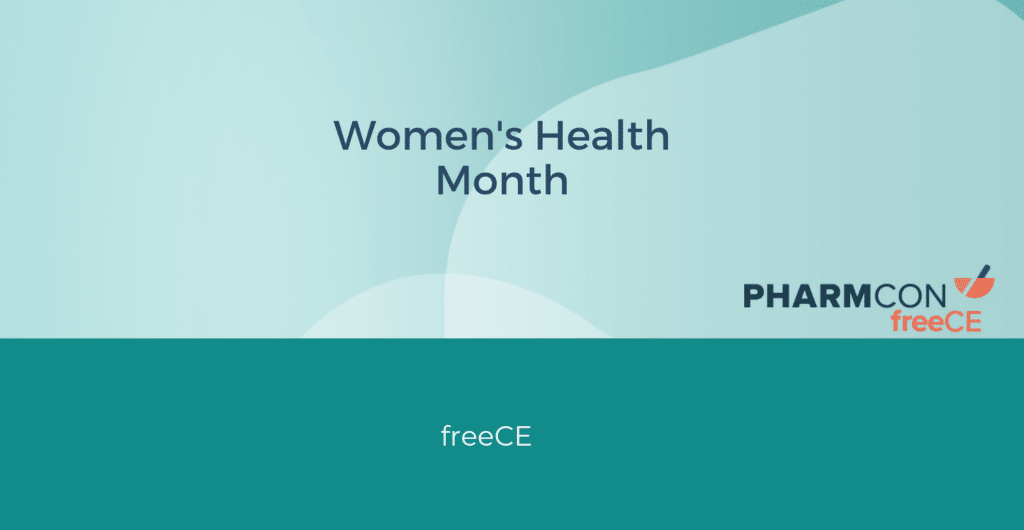Celebrating Women’s Health Month 2023
May marks National Women’s Health Month, a time dedicated to celebrating and empowering women to prioritize their health and well-being. It aims to encourage women to make their health a priority and provide them with the knowledge and resources they need to make informed health decisions.
Table of Contents
Health Concerns Women Face
Understanding the unique health concerns that women face is essential for promoting early detection, prevention, and effective treatment. By addressing these specific health issues, women can take proactive steps to maintain their well-being and improve their overall quality of life. Let’s explore some of the key health concerns that significantly impact women.
Breast Cancer
Breast cancer is a prevalent and significant health concern for women worldwide. It occurs when abnormal cells in the breast grow uncontrollably, forming a tumor. It is crucial to detect breast cancer early as it allows for more successful treatment outcomes and improves the chances of survival.
Regular breast self-examinations (BSE) are an essential practice for women to become familiar with the normal look and feel of their breasts. By performing regular BSE, women can identify any changes, such as lumps, skin dimpling, or discharge, which may require further evaluation by a healthcare professional. While BSE alone is not sufficient for diagnosing breast cancer, it plays a vital role in promoting breast health awareness and encouraging women to seek medical attention if they notice any abnormalities.
Mammograms are another critical tool in the early detection of breast cancer. These screening tests use low-dose X-rays to create detailed images of the breast tissue, allowing healthcare providers to identify any suspicious areas that may require further investigation. Regular mammograms are recommended for women starting at the age of 40 or as advised by their health care provider based on individual risk factors.
Advancements in breast cancer research have led to promising developments in the field. Personalized medicine approaches are revolutionizing breast cancer treatment by targeting specific genetic mutations that drive tumor growth. Genetic testing helps identify these mutations, enabling healthcare professionals to tailor treatment plans to individual patients, resulting in more effective and precise therapies.
Immunotherapies are also emerging as a significant breakthrough in breast cancer treatment. These treatments work by enhancing the body’s immune response to target and destroy cancer cells. They have shown promise in improving outcomes for certain types of breast cancer and are being extensively studied in clinical trials.
Early detection technologies are continually evolving, contributing to more accurate and timely diagnoses. Advanced imaging techniques, such as digital mammography, 3D mammography (tomosynthesis), and breast magnetic resonance imaging (MRI), provide clearer and more detailed images, allowing for the detection of smaller tumors and reducing the likelihood of false-positive or false-negative results.
Clinical trials and ongoing research are essential in advancing our understanding of breast cancer and developing innovative treatment options. Scientists and healthcare professionals are continuously exploring new strategies, such as targeted therapies, novel drug combinations, and immunotherapies, to improve outcomes for breast cancer patients.
It is crucial for women to remain vigilant about their breast health, regularly perform self-examinations, and follow recommended screening guidelines. Early detection through self-examinations, mammograms, and other diagnostic tools significantly increases the chances of successful treatment and improved survival rates. Additionally, staying informed about the latest advancements in breast cancer research and treatment options empowers women to make informed decisions about their healthcare and actively participate in their treatment journey.
Cervical Cancer
Cervical cancer is a type of cancer that affects the cervix. It is primarily caused by the human papillomavirus (HPV), a common sexually transmitted infection.
Regular screenings, such as Pap tests (also known as Pap smears) and HPV tests, play a crucial role in the early detection of cervical cancer. Pap tests involve collecting cells from the cervix to examine for any abnormalities or precancerous changes. HPV tests, on the other hand, detect the presence of high-risk HPV strains that are most likely to cause cervical cancer. These screenings allow healthcare providers to identify and monitor any abnormal cell changes in the cervix, enabling early intervention and treatment if necessary.
In addition to regular screenings, HPV vaccinations have emerged as a powerful preventive measure against cervical cancer. HPV vaccines are designed to protect against the most common types of HPV that cause cervical cancer. These vaccines are typically administered in early adolescence before sexual activity begins.
The introduction of HPV vaccines has shown promising results in reducing the prevalence of high-risk HPV infections, thus lowering the risk of cervical cancer. Studies have demonstrated a substantial decrease in HPV infection rates among vaccinated populations, leading to a decline in the incidence of cervical abnormalities and precancerous lesions.
However, it is important to note that while HPV vaccines are highly effective, they do not provide complete protection against all HPV strains. Therefore, regular screenings remain crucial, even for vaccinated individuals. Cervical cancer screenings should be initiated as recommended by healthcare providers, usually starting at the age of 21 or within a few years of becoming sexually active.
By prioritizing regular Pap tests, HPV vaccinations, and open communication with healthcare professionals, women can significantly reduce their risk of cervical cancer and ensure early detection and timely treatment if needed. Education and awareness campaigns play a vital role in empowering women to make informed decisions about their reproductive health and take the necessary steps to protect themselves against cervical cancer.
Ovarian Cancer
Ovarian cancer is a challenging disease to detect in its early stages, often leading to late diagnosis and poorer treatment outcomes. Unfortunately, there are currently no effective screening tests available for ovarian cancer, making awareness of symptoms critically important for early detection.
It is essential for women to be aware of potential signs and symptoms of ovarian cancer, such as persistent bloating, pelvic pain or discomfort, changes in urinary patterns (urgency or frequency), feeling full quickly while eating, or unexplained weight loss. These symptoms may be subtle or attributed to other conditions, which can further complicate early detection. However, if these symptoms persist for an extended period, it is crucial for women to seek medical attention and discuss their concerns with a healthcare provider.
To address the challenges in early detection, ongoing research is focused on identifying biomarkers and genetic factors associated with ovarian cancer. These advancements aim to develop more accurate and sensitive screening methods that can detect the disease in its early stages. Additionally, research efforts are dedicated to understanding the underlying mechanisms of ovarian cancer development, including genetic mutations and molecular pathways. This knowledge helps in the development of targeted therapies that can improve treatment outcomes and survival rates for women diagnosed with ovarian cancer.
In recent years, there have been promising developments in the field of ovarian cancer research. Scientists are exploring innovative approaches such as liquid biopsy, which involves analyzing a blood sample for the presence of tumor-specific DNA or other biomarkers. This non-invasive method holds potential for early detection and monitoring of ovarian cancer.
Raising awareness of the symptoms and risk factors associated with ovarian cancer is crucial for early detection and improved outcomes. Women should remain vigilant about their health, report any unusual symptoms to their healthcare providers, and participate in regular check-ups and screenings. Through continued research and medical advancements, there is hope for more effective early detection methods and targeted therapies that can significantly impact the lives of women affected by ovarian cancer.
Osteoporosis
As women age, the risk of developing osteoporosis becomes a significant concern. Osteoporosis is a condition characterized by decreased bone density and structural deterioration, leading to an increased risk of fractures. Understanding the risk factors and implementing preventive measures are crucial in maintaining strong and healthy bones.
One of the essential factors in preventing and managing osteoporosis is ensuring an adequate intake of calcium and vitamin D. Calcium is a vital mineral for bone health, and it is necessary for building and maintaining strong bones. Dairy products, leafy green vegetables, fortified foods, and supplements are excellent sources of calcium. Vitamin D plays a crucial role in calcium absorption and bone mineralization. It can be obtained through exposure to sunlight, fortified foods, or supplements.
Weight-bearing exercises are also essential in promoting bone health and preventing osteoporosis. Engaging in weight-bearing activities, such as walking, jogging, dancing, or weightlifting, helps stimulate bone growth and maintenance. These exercises put stress on the bones, prompting them to become stronger and denser.
Regular screenings, such as bone mineral density tests, are crucial for early detection and monitoring of osteoporosis. These tests assess bone density and evaluate the risk of fractures. Early detection allows for timely interventions and treatments to prevent further bone loss and reduce the risk of fractures.
In addition to these preventive measures, it is essential to adopt a healthy lifestyle that promotes overall bone health. Avoiding smoking and excessive alcohol consumption is beneficial, as these habits can negatively impact bone density. Maintaining a balanced diet that includes a variety of nutrients, along with regular physical activity, contributes to optimal bone health.
For individuals at higher risk of osteoporosis, healthcare providers may recommend additional interventions, such as medication or hormone therapy, to manage the condition and reduce the risk of fractures. It is important to discuss individual risk factors and preventive strategies with a healthcare professional to develop a personalized plan that addresses specific needs.
By implementing these preventive measures and adopting a bone-healthy lifestyle, women can significantly reduce their risk of developing osteoporosis and its associated complications. Taking proactive steps to maintain bone health throughout life is essential in ensuring a strong and fracture-resistant skeletal system, allowing women to maintain an active and independent lifestyle as they age.
Women’s Health and Health Care Providers
Finding a health care provider you feel comfortable with and supported by is crucial for overall health and well-being. Establishing trusting and open relationships with healthcare professionals allows women to feel safe in discussing their concerns, seeking guidance, and receiving appropriate care. Whether it’s an annual check-up, managing chronic conditions, or addressing specific health issues, having a supportive health care provider is essential.
Women often encounter unique health challenges. Therefore, it is vital for health care professionals to take women’s pain, symptoms, and experiences seriously. Historically, women’s health concerns have sometimes been dismissed or overlooked, leading to delays in diagnosis and treatment. It is the responsibility of health care providers to listen attentively, validate women’s experiences, and conduct thorough evaluations to address their specific needs.
Health care professionals should stay informed about the latest research, guidelines, and best practices pertaining to women’s health. Advancements in medical knowledge can inform more accurate diagnoses, effective treatments, and preventive measures. Continuing education and professional development enable health care providers to stay up to date with the evolving field of women’s health, ensuring the highest level of care for their patients.
The Role of Mental Health
Health encompasses several facets, each playing a vital role in overall well-being. One of the key aspects often overlooked is mental health. Women face unique challenges and societal pressures that can impact their mental well-being. According to the World Health Organization (WHO), mental health disorders such as depression and anxiety are more prevalent in women than in men. It is essential to prioritize mental health by seeking support, practicing self-care, and promoting open conversations about mental well-being.
Me Time: Finding Time to Fill Your Bucket
Amidst the responsibilities and demands of daily life, it is crucial for women to carve out time for themselves. “Me time” allows women to recharge and focus on activities that bring them joy and fulfillment. Engaging in hobbies, practicing mindfulness, and spending quality time with loved ones are all ways to prioritize self-care. Taking regular breaks and engaging in activities that bring happiness can improve mental well-being and overall life satisfaction.
Owning Your Life: Coming to Grips With Who You Are
Women’s Health Month encourages women to embrace their unique identities and take ownership of their lives. This involves understanding personal values, setting boundaries, and making choices that align with individual aspirations. By empowering themselves, women can create a life that reflects their true selves and fosters long-term happiness. Research indicates that having a sense of control and autonomy in one’s life is associated with better mental and physical health outcomes.
Prioritizing Health And Well-being
Women’s Health Month provides an opportunity to celebrate women and empower them to prioritize their health and well-being. By understanding the different facets of women’s health, women can make informed decisions to improve their overall health. It is crucial to stay proactive, seek support, and take the necessary steps to lead a fulfilling and healthy life. Let us embrace Women’s Health Month as a reminder to make our health a priority and inspire others to do the same.
freeCE Related Pharmacy Resources:







